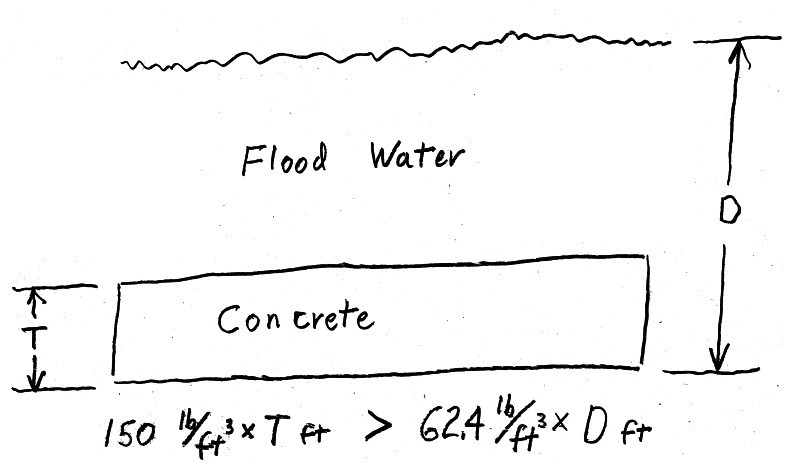Dear Friends and Technical Experts.
I was assigned a task to dry flood proof an existing one storey building. I have calculated the dead weight of the building which counteracts the floatation forces. But the issue I have is the slab on grade.
with 2' of flood water the buoyancy forces are high on the slab. The slab is 4" thick and is not connected to the exterior walls. The client does not want to increase the slab thickness as they have to move all the interior walls and kitchen equipment and misc electric systems.
I have 4" slab weighing 49.5psf and I have 124.8 psf buoyancy force. I need to counteract 75.3 psf upward force.
Has any one used floor anchors before and if so can you suggest a manufacturer or a detail?
Wet flood proofing is not an option for the client.
Thank you all in advance.
I was assigned a task to dry flood proof an existing one storey building. I have calculated the dead weight of the building which counteracts the floatation forces. But the issue I have is the slab on grade.
with 2' of flood water the buoyancy forces are high on the slab. The slab is 4" thick and is not connected to the exterior walls. The client does not want to increase the slab thickness as they have to move all the interior walls and kitchen equipment and misc electric systems.
I have 4" slab weighing 49.5psf and I have 124.8 psf buoyancy force. I need to counteract 75.3 psf upward force.
Has any one used floor anchors before and if so can you suggest a manufacturer or a detail?
Wet flood proofing is not an option for the client.
Thank you all in advance.


![[idea] [idea] [idea]](/data/assets/smilies/idea.gif)
![[r2d2] [r2d2] [r2d2]](/data/assets/smilies/r2d2.gif)